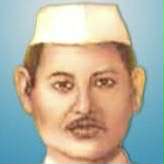
1907 - 1934
Baikuntha Shukla
Summary
Name:
Baikuntha ShuklaYears Active:
1932Birth:
May 15, 1907Status:
ExecutedClass:
MurdererVictims:
1Method:
ShootingDeath:
May 14, 1934Nationality:
India
1907 - 1934
Baikuntha Shukla
Summary: Murderer
Name:
Baikuntha ShuklaStatus:
ExecutedVictims:
1Method:
ShootingNationality:
IndiaBirth:
May 15, 1907Death:
May 14, 1934Years Active:
1932bio
Baikuntha Shukla was born on 15 May 1907 in the village of Jalalpur, located in the Muzaffarpur district of the Bengal Presidency under British India, which is now part of Vaishali district in Bihar. He came from a family with strong revolutionary leanings—he was the nephew of Yogendra Shukla, a noted nationalist and one of the early architects of the Hindustan Socialist Republican Association (HSRA), the revolutionary group known for its militant resistance to British colonial rule.
Raised in a rural environment, Baikuntha Shukla received his elementary education in his village and later worked as a teacher in a lower primary school in Mathurapur. His early career in education was soon overshadowed by his deepening involvement in the nationalist cause. Inspired by the rising tide of anti-colonial movements, he actively participated in the Indian National Congress–led Civil Disobedience Movement of 1930. During this phase, he was arrested and imprisoned at Patna Camp Jail. He was released following the Gandhi-Irwin Pact in 1931, a truce that led to the release of several political prisoners and temporarily halted the civil resistance.
Upon his release, Shukla began to gravitate toward more radical elements of the independence movement. He came into contact with members of the Hindustan Socialist Republican Association (HSRA), the group responsible for a series of political assassinations and bombings aimed at British officials and Indian collaborators. This period marked a shift in his ideology—from Gandhian non-violence to revolutionary nationalism, which he believed was a more decisive response to colonial oppression.
murder story
The political landscape of early 1930s India was charged with emotion, especially after the execution of Bhagat Singh, Rajguru, and Sukhdev in 1931. These young revolutionaries had become martyrs, symbols of defiance against colonial oppression. Their execution, however, had been made possible by testimony provided by a former associate of the HSRA, Phanindra Nath Ghosh. Once a trusted member of the movement, Ghosh had turned government approver, betraying his comrades to save his own life.
For the HSRA, this was an unforgivable betrayal. Baikuntha Shukla, now a dedicated revolutionary, was chosen to exact justice for what was seen as an ideological and moral crime. In their view, Ghosh had not just betrayed individuals; he had betrayed the movement, the cause, and the dream of an independent India.
On 9 November 1932, Baikuntha Shukla tracked down Phanindra Nath Ghosh and executed him. The exact method is not definitively recorded in available historical sources, but given the revolutionary methods of the time, it is presumed to have been a targeted assassination, likely by gunshot or stabbing, a common form of retributive action in that era.
Shukla was arrested soon after the killing. He did not resist arrest, nor did he express regret. His trial followed, likely in 1933, where he was convicted for the murder of Ghosh. The British colonial authorities saw him not as a hero but as a criminal, a political assassin disrupting the fragile peace of empire.
He was sentenced to death and held at Gaya Central Jail. On 14 May 1934, just one day before his 27th birthday, Baikuntha Shukla was executed by hanging.